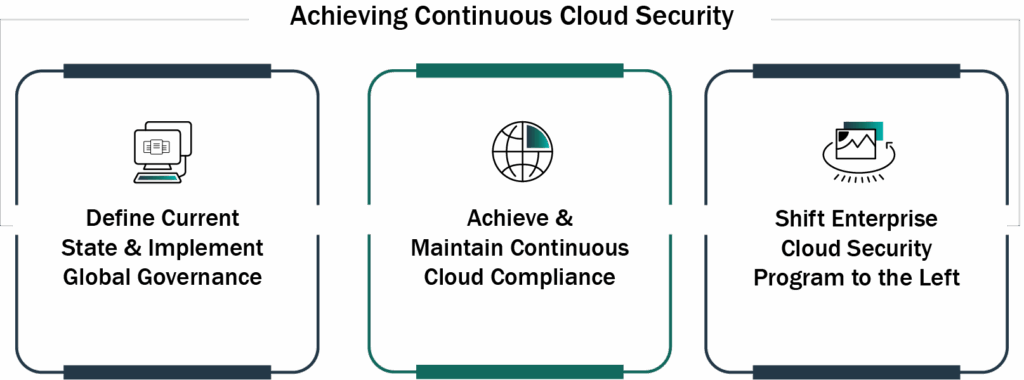
Agentic AI & The Urgency Trap: Why Explainability and Governance Must Come First
Learn how explainability, governance, and auditability in agentic AI systems help ensure safe, ethical, and accountable deployment while keeping innovation on track.
Read part two of our three-part series dedicated to helping you achieve continuous cloud security. In this article, we dive into Phase Two of the process, known as “Getting to Green.

As covered in part one of this series, maturing your cloud security program can be challenging if not done systematically. We believe that success lies in moving your program through three maturity stages. Doing so establishes a robust, scalable, and efficient security program aligned to strategic business goals.

Stage Two of our cloud security maturity model—Achieve & Maintain Continuous Cloud Compliance —is often referred to as “getting to green.” This crucial stage builds upon the foundation established in Stage One and focuses on aligning global policies, enhancing third-party governance, and integrating ticketing and response mechanisms. It is all about achieving and maintaining continuous cloud compliance, and this blog post will give you tips to make it happen.
As organizations continue to adopt hybrid and multi-cloud strategies to manage infrastructure, ensuring compliance with policies—internal and external—is critical. Non-compliance can bring severe consequences like failed audits, data breaches, and reputational or financial damage.
Continuous monitoring and enforcement of cloud security policies is what helps you mitigate the risks associated with newly provisioned assets, shadow development, and third-party integrations. And while having clearly defined policies is important, so is having strong technical controls and organizational buy-in.
The most effective way to achieve and maintain continuous cloud compliance is by adopting a multi-faceted approach that aligns policies to robust technical controls and combines that with strong cultural adoption.
Let’s talk about cultural buy-in first. Compliance is a team sport—all coaches, staff, and players need to work together to get the win. This requires communicating goals and KPIs, as well as ensuring positive reinforcement is applied across the organization.
Once the importance of continuous compliance is understood by the entire organization, adopting strong technical controls becomes easier. Here are ways to move the needle in the right direction:
By focusing on both technical controls and building a culture of security, you can transform compliance from a reactive, check-the-box exercise to a continuous discipline. This proactive approach minimizes audit risks, reduces incident response times, and fosters trust with regulators, customers, and employees.
As you progress through your cloud maturity journey to Stage Two, don’t hesitate to reach out to Stratascale for support and read our final blog in this series.
Practical Guidance & Threat Intelligence
Stay a step ahead of the competition–and attackers–with fresh perspectives, practical guidance, and the latest threat intelligence.

Learn how explainability, governance, and auditability in agentic AI systems help ensure safe, ethical, and accountable deployment while keeping innovation on track.

Our team shares key takeaways from Black Hat 2025, including why foundational security practices, AI governance, and insider threat management are more critical than ever for building resilience and aligning cybersecurity with business strategy.

Joseph Karpenko, Field CISO, shares ways to master foundational security practices to dramatically reduce risk, enhance operational resilience, and empower you to stay ahead of evolving cyber threats.
